Standing on each other's shoulders at 60
Acrobats standing on each other's shoulders, even at 60. Too old? No way, they have a lot of experience. The topic is a curiosity of the circus authors' young generation, motivated to bring more elders into the spotlight. What about the body's ageing process? It turns out that they can do more than a circus audience would expect. At their age, the fear of mistakes is part of the process and not a big deal anymore. And mutual respect and care shine through. In this article focused on circus made in Flanders, the cultural journalist Joost Goutziers, through interviews and reviews, explores the rising trend.
Contemporary circus is not exclusively a playground for young bodies. There also appears to be a place for older performers. Acrobats in their fifties and sixties bring a mountain of experience and it is the new generation of circus performers who push older people forward. That fits the call for inclusion in society, art, and the circus sector. Det Rijven is 67. At her age, she never thought she would still be performing as an acrobat in a show, as she used to enjoy doing. Neither did Winfried Deuling (63). They do it anyway and go all out. The two plays with contemporaries Astrid, Thorsten, Paul and Johannes in Glorious Bodies (the title says it all) by the Flemish dance and circus choreographer Piet Van Dycke (27). The six acrobats are all between 55 and 67 years old. They have had careers in classical circus, entertainment or variety. They played on the streets and in venues but stopped touring years ago. Thorsten Bohle (55), for instance, being a structural engineer, was mainly behind his desk. Now they have a comeback.
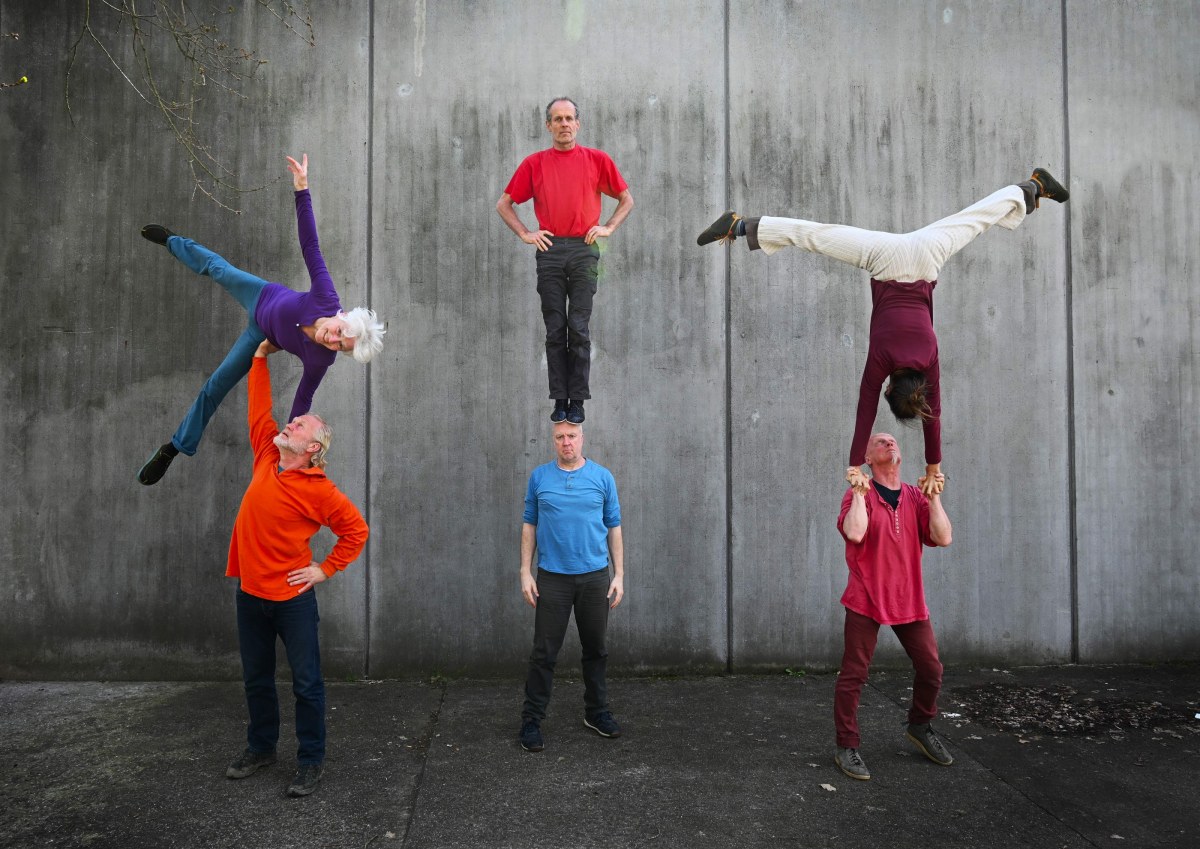
Piet Van Dycke planted the seed for the show during the coronavirus period. He noticed that a trained body regresses when forced into pause mode. "It went from optimal training to nothing. Playing a lot maintained my body naturally, and suddenly it couldn't. It made me think. How long can I continue if I can keep training, until what age? And are there any older acrobats in the circus training at all, and at what age do they do it? Until their 40s, until their 50s?" He had seen performances where an older person plays a role, and a younger performer lifts an older one. So, with his company, Circumstances, the choreographer decided to make a show with only older performers, in which all the attention goes to them. An audition, where hordes of artists would apply, would not have worked to find the right ones. He was looking for la crème de la crème. A colleague, Kim-Jomi Fischer from the circus and dance duo Marta and Kim, told him his father, Johannes, still trains super actively. Through him, he found out about the others. Some had known each other for 40 years, and now, suddenly, they are playing together.
Before starting Glorious Bodies rehearsals, Det Rijven feared severe injuries. A year of training and a lot of playing, what would that mean for her body? Piet Van Dycke created an outline for the show, focusing on the ageing body’s fragility. With older people, you quickly get the idea that the body can do less. At first, he thought he would have to be extra careful, but gradually, he had to change his plan. His acrobats were capable of much more than he had ever dared to dream. "Acrobatics is endless fun for them. It never feels like an obligation. They have an excellent command of their technique. That's why they have maintained their bodies so well. They train often with a daily routine. There are true clichés on old age, but we can offer a different perspective. The players' enjoyment is great. When warming up, they are jumping rope, playing tag." Appealed by their mental agility, he knows that remembering is spicy for them. Choreographies are complex and constantly changing. “Something they learned yesterday must be different again today. The cutting and the pasting, frequent in a creation process, are the most tiring for the players”.
However, senior acrobats know how to do a trick. They have a lot of experience and handle their bodies more consciously. When a younger performer still thinks, 'I can do everything by strength', an older one shows he can do it by experience. In Glorious Bodies, the trick starts when the feet leave the ground and ends only when the feet are safely back on the floor. There is no hard landing, as often happens with youngsters who can catch themselves more easily.
Senior acrobats have a lot of experience and handle their bodies more consciously. When a younger performer still thinks, 'I can do everything by strength', an older one shows he can do it by experience.
There is a sort of aesthetic irony in circus innovation behind the scenes. Once they were young, the acrobats of Glorious Bodies used to create short acts, playing a character towards the image of classical circus and entertainment, using weird hats, costumes, and make-up. Nowadays, they perform in an hour-long contemporary piece with a director. They are not a type anymore and have to be themselves. This fact forces them to step out of their comfort zone. According to Piet Van Dyke, this is the big task for his acrobats: finding a different way from their past selves and a mutual playing style. The show brings on stage references to their past acts, tricks and careers. But these questions remain central: is there still room in the circus for older performers? Are they still allowed in the spotlight?
The piece turned out differently than the author had thought beforehand. “It is nice seeing the six acrobats taking great care of each other. It is not about impermanence. It is more of a hopeful performance. These acrobats consider a trick successful when it is tip-top, but there is so much beauty when it fails. They always catch each other off guard. And the experience of getting older is visible”. When Astrid Schöne (55), the youngest, is lifted high into the air, Det Rijven, the oldest, stands below watching. She imitates her colleague's movements but stays safely on the ground. It is desire she shows, but also the realisation that she can no longer do everything.
Det Rijven, who taught at the Academy for Theatre and Dance in Amsterdam, is pleased with her role in the show. She feels older performers have an enormous stage presence: “It's a shame that dancers are off at 40 because they are such beautiful movers. It is fascinating how someone's face changes as they get older, how the hair changes colour and the posture and motor skills change". She hopes Glorious Bodies will be emancipating and states: "Look at that beauty. It is not only about the longest, the fastest, the highest. See what beauty ageing brings."
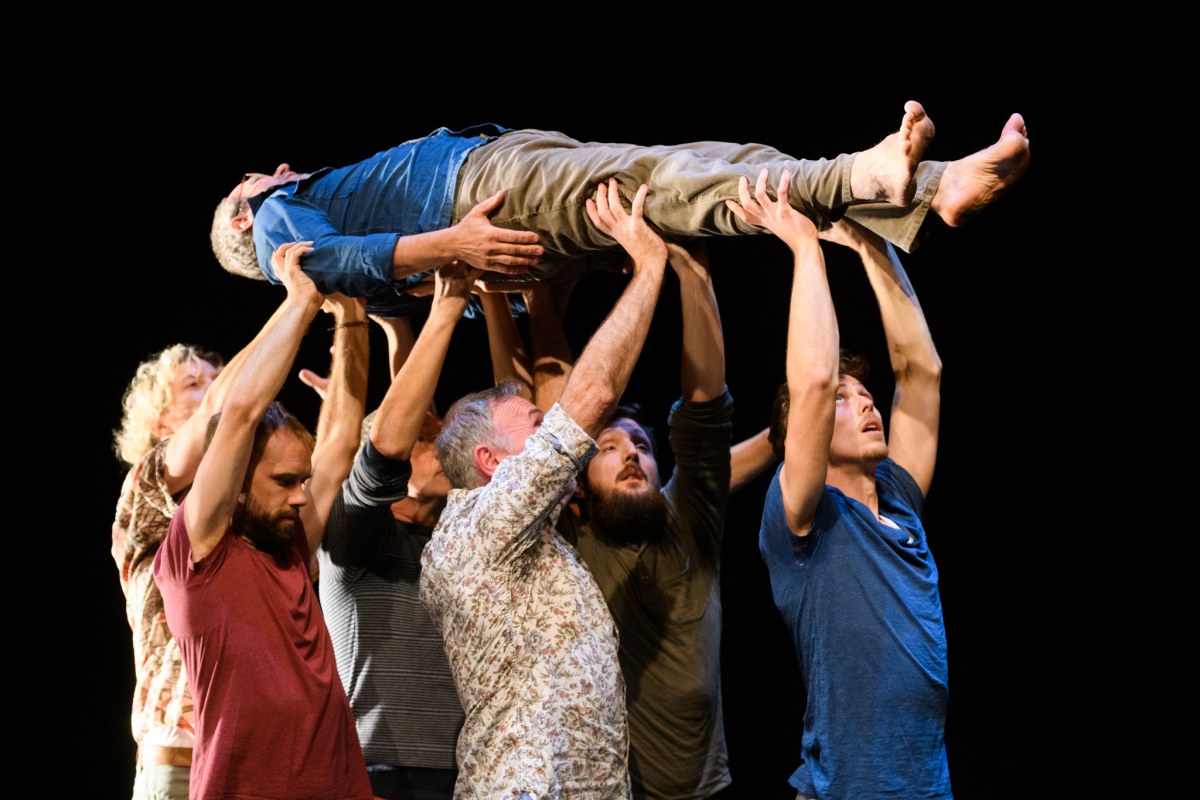
Piet Van Dycke is not the only one experimenting with older performers. The Flemish THERE THERE Company made the show Carrying My Father in 2020, where four young acrobats perform with their fathers. Years ago, those fathers used to carry their sons and introduce them to their world. In making this performance, the sons helped their fathers with acrobatics and introduced their dads to the creative world where they felt at home. The eight performers on stage play themselves. The youngsters are experienced artists. Their fathers are sporty but not trained acrobats. They are teachers, graphic designers and coordinators in the social sector. Toon Van Gramberen of THERE THERE Company was fascinated by the ageing body. How does an older man's body can work in the circus? He wondered. He was looking for an elder and ended up with his father, who had just retired. The first experiments grew into a big show. Carrying My Father brought fathers and sons closer. They worked many days together and had to rely on each other when the father stood on the son's shoulders. And it took getting used to grabbing each other by the belly or chest. Shaking hands, they knew, slapping on the shoulder, or a hug too, but this intimacy was new for father and son.
They had to rely on each other when the father stood on the son's shoulders. Shaking hands, they knew, slapping on the shoulder, or a hug too, but this intimacy was new for father and son.
The play begins with a careful groping. The fathers' voices are audible: 'I think I can keep up in terms of fitness'. Then, fathers and sons hang against each other, lean on each other, keep each other balanced and, gradually, climb on each other's shoulders in pairs, but also as a group of eight. For instance, a father climbs on his son's knee. Then, he scrambles up the human hill that the players form. They also make a bridge over which a father can walk. He stands high in the air and steps further and further forward via the hands of the others. The tension of the performance is in its variety. Beams of light illuminate the duos. Then, the collective is on the spot again. From the first moment, it is clear that you are watching some particular interplay, and you can perceive care and mutual respect. That is heartwarming to see.
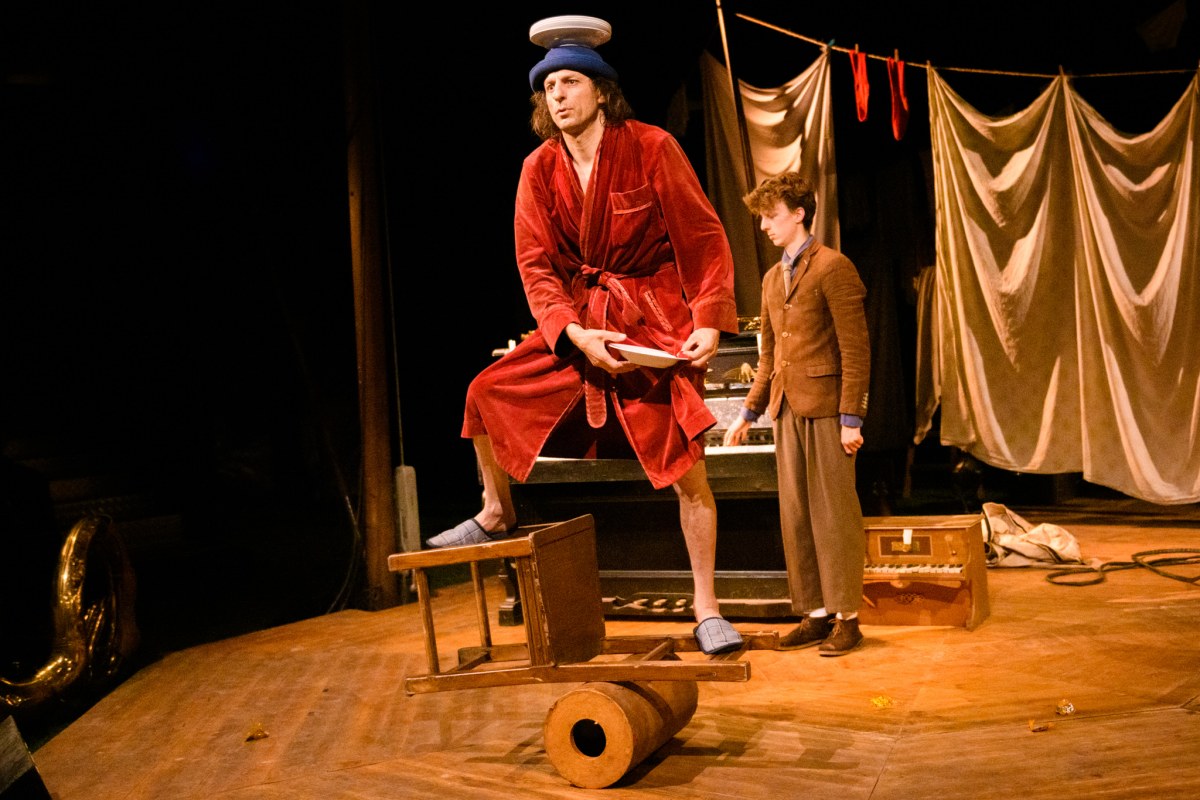
Danny Ronaldo has also been in the circus for many years. With Circus Ronaldo, the versatile Flemish artist created poetic, theatrical circus performances such as La Cucina dell'Arte and Fidelis Fortibus. He is a juggler, clown, and musician, inspired by commedia dell'arte and is the sixth generation in the Ronaldo circus family. He performs the show Sono Io? with his son Pepijn. The tragicomic piece is about a father and son. Clown and acrobat, Danny looks back with melancholy at his many successes in the past, and it seems that in his memories, they have only grown bigger. His son is at the start of a promising career, but his dad has no intention of just giving way. He still feels he is his son's star and teacher. Patiently, Pepijn watches his father's tricks and helps him where necessary, even if his father does not notice. The father, especially in the beginning, is mainly concerned with himself. A great image is when the two balance together on a piano, moving back and forth on a rolla bolla. The two balance each other beautifully. Pepijn is a modest boy, and he looks up to his father. Danny tries to show his best side so his son can be proud of him. In Sono Io? their characters are magnified.
The trend of giving older performers a place on stage has long been no exception in the contemporary dance world. Consider the role of Truus Bronkhorst (72) in Jan Martens & Dance On Ensemble performance' Any Attempt will end in crushed bodies and shattered bones. Many years earlier, dance innovator Pina Bausch worked with older dancers for a new cast to revive her famous piece, Kontakthof.
Dancer Eddy Becquart, retired, is also still on stage. He performed in several productions by Panama Pictures, another company from the Netherlands working at the intersection of dance and circus. In Vanishing Point, he plays the old man' character who would love to join a younger generation. He wants to climb up a high wall, stand and balance on a beam at height, but he can no longer do so. The choreographer Pia Meuthen played a decisive role in the process. Eddy Becquart explains: "Audiences can have a rather ruthless, critical eye and quickly think: 'Ah, the old man wants to show that he can still do it too'. Pia realises that well. She understands that she shouldn't combine me with young men, with youth. She puts me opposite them. Or on the edge. That's how vulnerable encounters are created instead of raw contrasts."
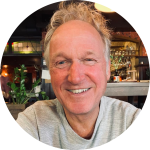
Joost Goutziers is a cultural journalist from the Netherlands. He writes about various topics, but specialises in contemporary circus, contemporary dance and site-specific theatre. He also gives workshops to young writers who want to publish about dance or learn to review. He wrote, among other things, the articles for the book Portraits of Contemporary Circus and is now working on a book about dance. He is convinced that culture is good for a person's health, physically and mentally, and that culture can make society a little better.
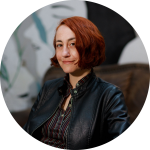
Valentina Barone is a freelance cultural manager and editor specialising in the contemporary circus and live performance sector. Since 2021, she has been Director of International Relations at the CircusDanceFestival in Cologne (Germany). She holds a BA in Performing Arts Techniques and a Master's degree in Relationship Design. She works with the international network Circostrada (France) and is an active member of the Cirkus Syd' Circus Thinkers Platform (Sweden). Valentina is the coordinator of the international digital platform Around About Circus.



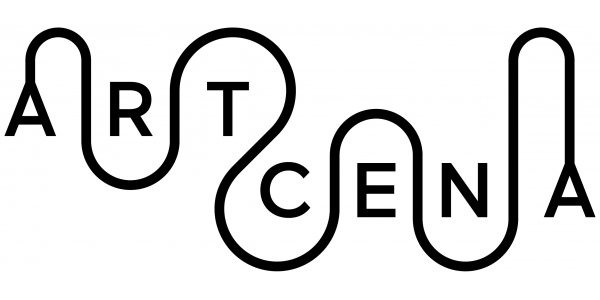

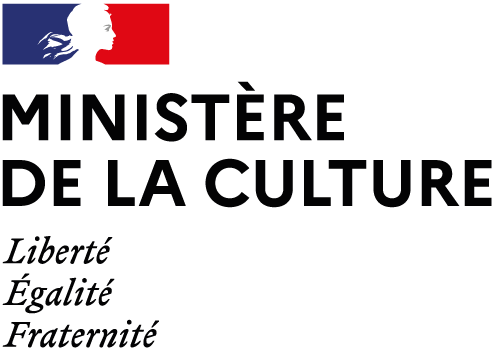
write us: infocircostrada@artcena.fr